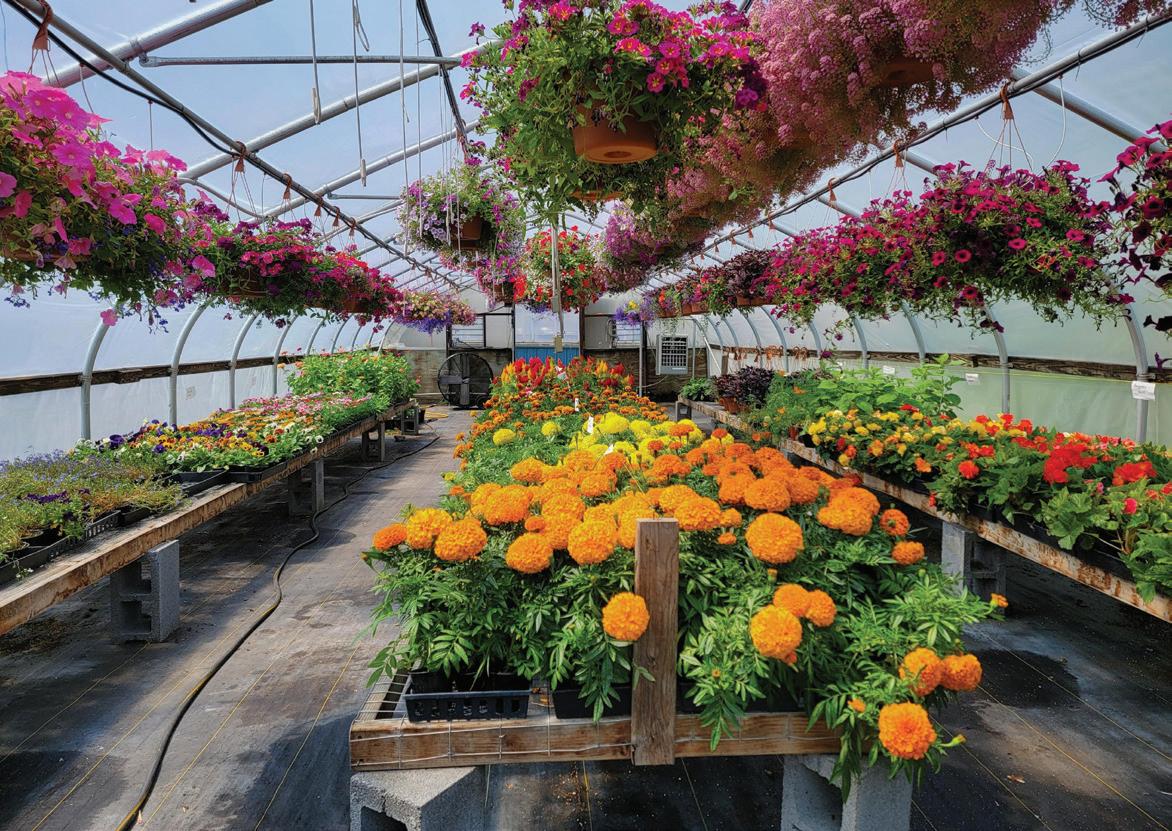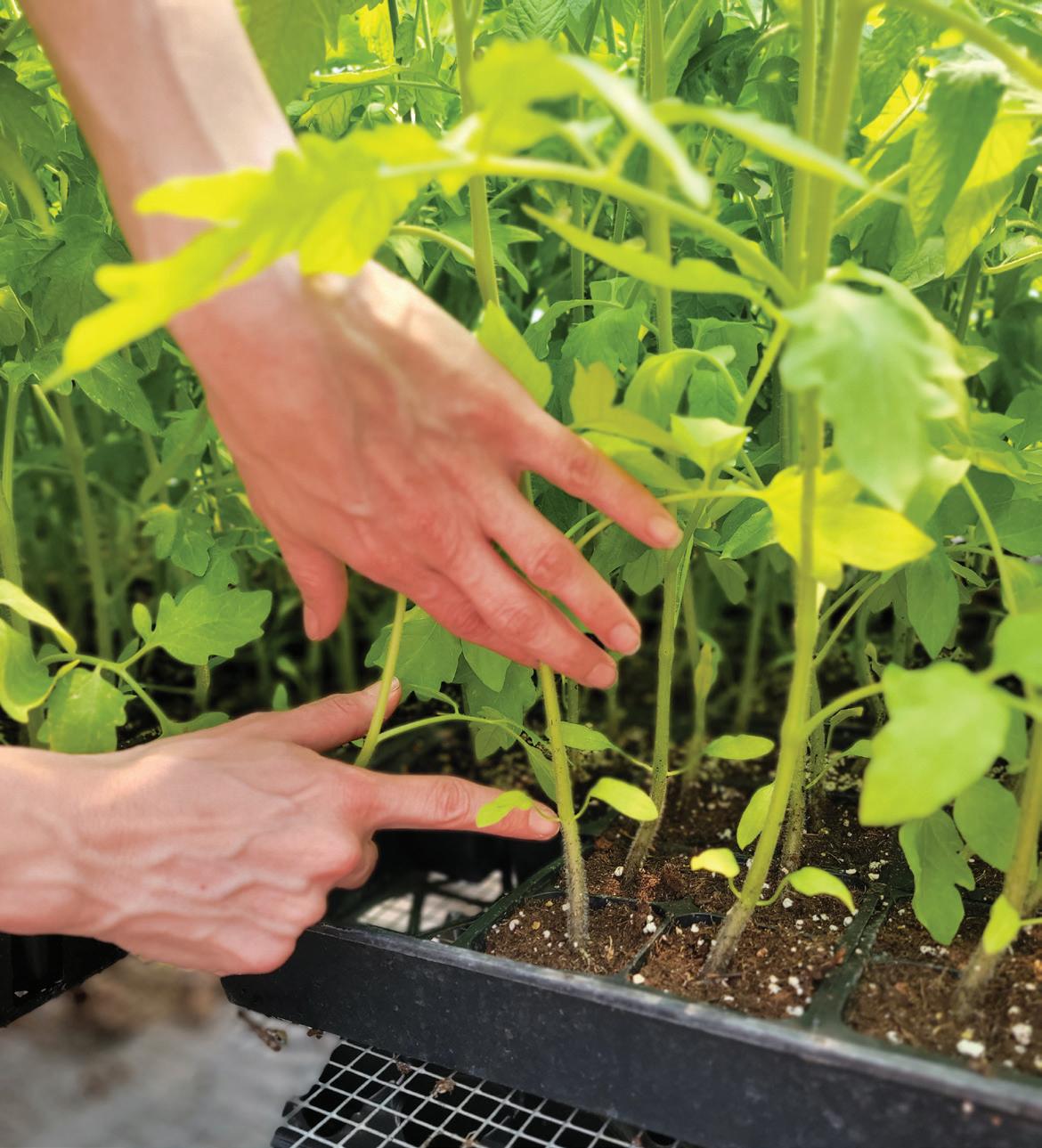
4 minute read
Late Spring for Mohawk Valley Gardeners
By Allysa Rader
Spring sprang, and summer is on its way. For those of us in this growing region who are looking to get their hands in the dirt this season, the time to start is now.
Advertisement
According to Teri Dunn Chace, local gardening expert and author of dozens of books on gardening, landscaping, and horticulture, the ideal time to plant outside in our growing zone is Memorial Day Weekend and after.
“The danger of frost hasn’t passed until then,” explained Teri.
Pruning, replanting, and bulb chopping can still occur in late spring as long as you are doing it before the hottest temperatures arrive.
“Plants are stressed in the heat of summer,” says Teri.
The first step in the garden is pulling out the weeds. The optimal time to begin this work is when your soil is damp, and the weeds are still small. It is also important to be careful about how you dispose of unwanted plants. Teri suggests throwing the pulled weeds in your garbage. If you would like to put the weeds in with your green waste or compost, care should be taken to ensure they won’t regrow there.
“Weeds are aggressive. They are the most successful plants. They will regenerate from a tiny bit of plant. Place the weeds you pull into a black garbage bag and leave that in the sun until the weeds are completely dried out. Kill them to death, as we say. Then they can be buried in the ground and mulched over with straw to ensure they won’t be sprouting up again,” suggests Teri.
Teri’s book “The Anxious Gardener’s Book of Answers” contains helpful hints and tips to get even a gardening novice off on the right foot. Each chapter explains “The right way to do it” to avoid gardening pitfalls and even offers solutions for mistakes: “If I goofed, can I fix it?”
“This is an easy place to garden. The Mohawk Valley is in a unique position, having no shortage of water,” says Teri, who is originally from California, where water shortages threaten farmers and gardeners alike. “Our soil in the Mohawk Valley is naturally organically rich. And we have moderate soil and a moderate climate. This all contributes to gardening success.”
In the Mohawk Valley, we are in growing zone 6. “Knowing your zone and what does well here is important,” says Teri.
If there are plants outside of our growing zone that you would like to grow, such as cacti, succulents, or tropical plants, these can be houseplants.
Teri suggests repotting your potted plants in new soil yearly. “Many houseplants are coming alive in spring, so this is also a good time to be replacing their soil. Houseplants can be placed outside starting in late spring, either directly into the ground or still in their pots,” suggests Teri. She recommends ensuring they are protected from strong winds and extreme summer weather like thunderstorms.
Teri suggests speaking with your local garden and nursery center staff to learn more about which plants will do best in our growing zone.
Angela Fazekas, owner of A&W Greenhouse and Gardens in Little Falls, encourages any local gardeners with questions
Only $13.75 l4pm-8 pm lNow every 2nd and 4th Thursday of the month
May 11 and 25 August 10 and 24
June 8and 22 September 14 and 28
July 13 and 27 October 12 and 26 STAY TUNED AND CHECK FACEBOOK FOR OTHER EVENTS,HOLIDAY
EventPlanning Available! Call 518-673-3635
“Soil is the most important part of gardening. Much of the soil in Little Falls has clay, which can be hard to grow in. You can till and add soil amendments, or raised beds are a great choice because you can bring in soil that is better for growing.”
“Also, the tap water in Little Falls has a high pH, which could harm your plants,” Angela explained.

Instead of water from the
LATE From Page 14 hose, collecting rainwater might be a better option for garden watering if you have municipal water.
“Aquarium water is also a great option for watering and acts as a fertilizer,” she suggests.

“And, save plastic bottles and poke holes in the cap. Fill them with water and plant them upsidedown next to each plant for an easy way to help you water your garden regularly.”
Angela agreed with Teri that the end of May into June is the best time for planting in our area. She offered a saying passed down from her grandmother to remember when to plant: “When the frost is done, the planting has begun.”
“I’m the flower girl,” says Angela. “I love flowers. When planning a planting box or basket, you’ve got spillers, thrillers, and fillers. The thrillers are bold flowers that stand out and offer the ‘wow’ factor, like our Begonias. These are the centerpiece plants with star quality. Spillers are a splash of mischief that tumbles out of the pot to soften the edge and contrast with the other plants. Fillers are foliage or flowering plants that complement but do not overwhelm the main player, such as Flocks or Creeping Jenny. For spillers, we have Thunbergia, a vine that does very well here, or the Lofo, which will blossom up until
November.”

Angela had some additional tips and tricks to offer the Mohawk Valley gardener. “Vining vegetables, like cucumbers, can be strung up or grown next to pallets. Train the plants to grow along the string or up the pallet. This makes for easy picking and keeps the vegetables off the ground and away from insects. Strings should go from the base of a plant to as high up as possible, like to a roof eave. The pallets can be screwed vertically to a raised bed’s side.”
Tomatoes are a popular, versatile vegetable plant that does well in our area. “For tomato plants, it is best to plant them deep, beyond the first leaves, as far up as the roots come off the stalk. This will lead to bigger plants that can sustain heavy wind and rain,” Angela suggests.
A&W has seven different varieties of tomatoes left available. In early spring, they were offering a variety of heirloom tomatoes passed on by Angela’s Great-Uncle Herold Blovat, who has been planting the same tomato plant for over 50 years.
Angela explained, “He named this tomato variety after his late wife, Eileen. I am so proud to be continuing on these tomatoes for him. We have customers that love these ‘Eileen’ tomatoes, and we sell out right away.”
Angela’s customers tell her that A&W Greenhouse and Gardens is their happy place. “Plants make people happy!” she exclaimed with a smile.
Garrett Livermore, Executive Director at Cornell Cooperative Extension of Herkimer County, stated that there has been an increased number of food crop gardens planted across the Mohawk Valley over Please See LATE Page 17










